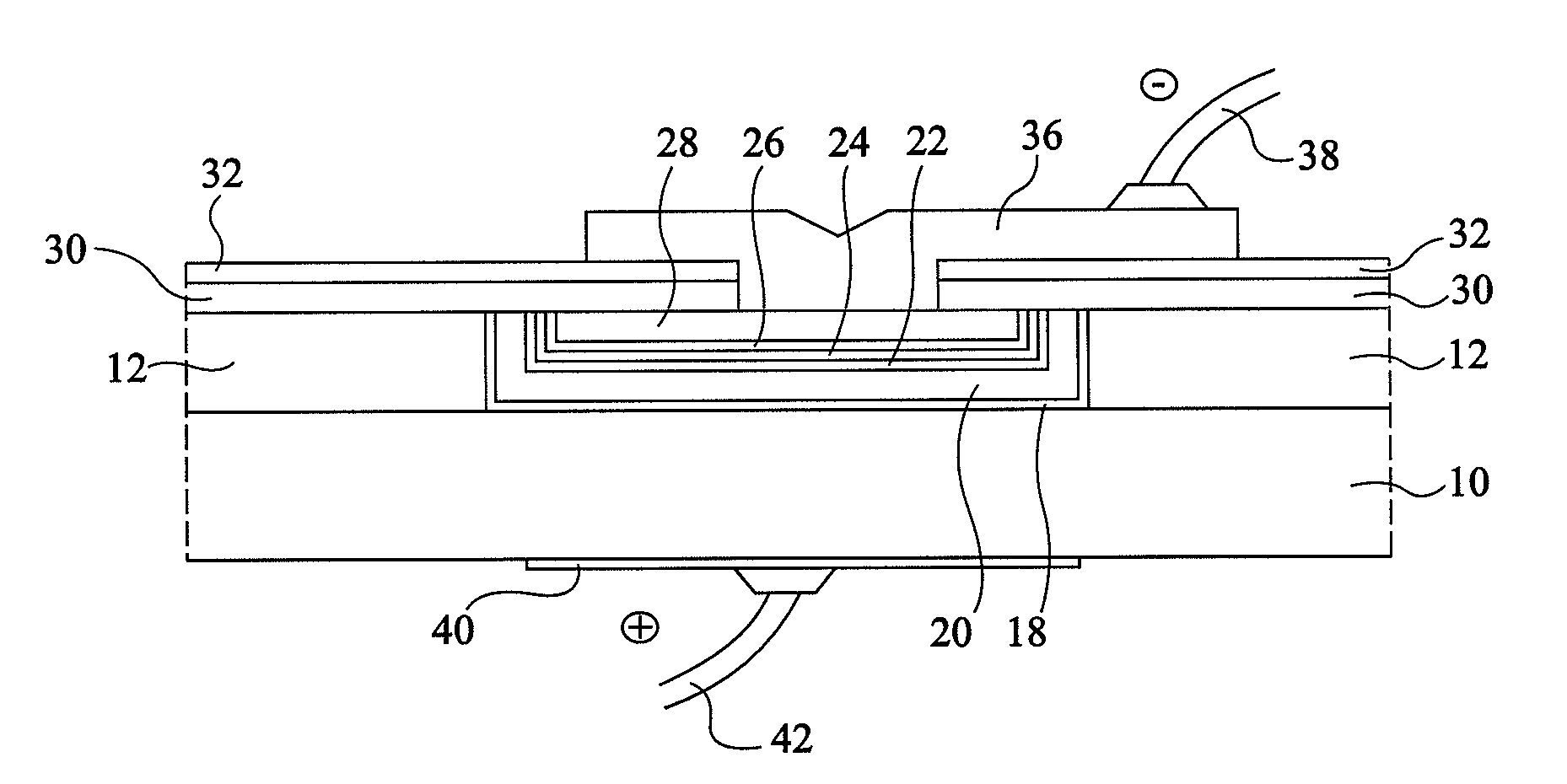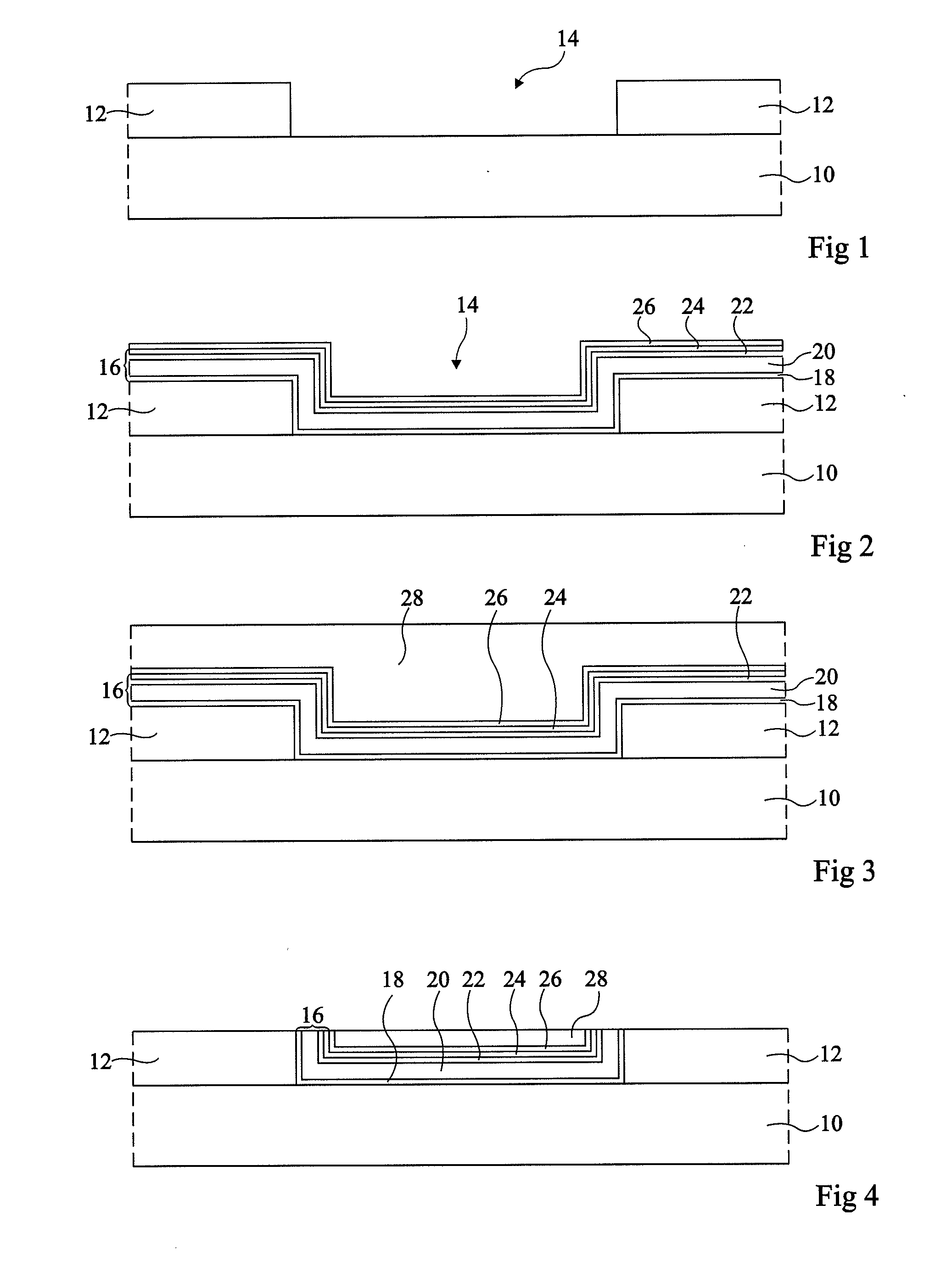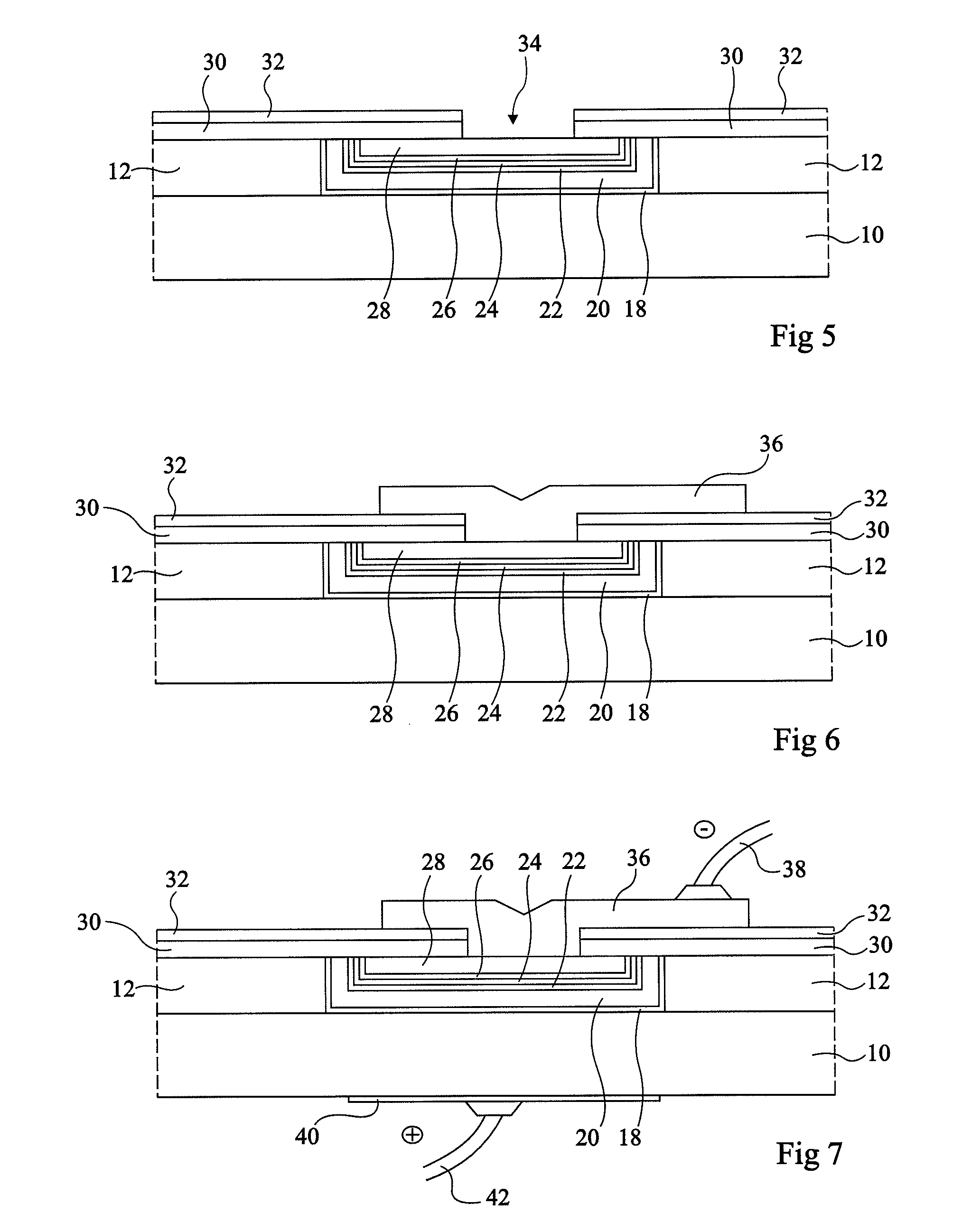Method for forming a thin-film lithium-ion battery
a lithium-ion battery and thin-film technology, applied in nanobatteries, cell components, sustainable manufacturing/processing, etc., can solve the problems of battery forming by sputtering through a shadow mask, battery not being adapted to form batteries of smaller dimensions, and relatively high cos
- Summary
- Abstract
- Description
- Claims
- Application Information
AI Technical Summary
Benefits of technology
Problems solved by technology
Method used
Image
Examples
Embodiment Construction
[0024]For clarity, the same elements have been designated with the same reference numerals in the different drawings and, further, as usual in the representation of small thin-film components, the various drawings are not to scale.
[0025]FIGS. 1 to 7 illustrate results of steps of a method for forming a lithium-ion type battery.
[0026]At the step illustrated in FIG. 1, it is started from a structure comprising a conductive substrate 10, on which a layer 12 of insulating material is formed. An opening 14 is made in the insulating material layer across its entire thickness. As an example, substrate 10 may have a thickness ranging between 500 and 800 μm and may be made of doped silicon or of a metal. Insulating layer 12 may be made of silicon oxide.
[0027]To obtain this structure, an insulating layer may be deposited all over conductive substrate 10, after which this layer may be etched by lithography to create opening 14, by means of a resin in which an adapted pattern is previously form...
PUM
| Property | Measurement | Unit |
|---|---|---|
| Thickness | aaaaa | aaaaa |
| Thickness | aaaaa | aaaaa |
| Thickness | aaaaa | aaaaa |
Abstract
Description
Claims
Application Information
 Login to View More
Login to View More - R&D
- Intellectual Property
- Life Sciences
- Materials
- Tech Scout
- Unparalleled Data Quality
- Higher Quality Content
- 60% Fewer Hallucinations
Browse by: Latest US Patents, China's latest patents, Technical Efficacy Thesaurus, Application Domain, Technology Topic, Popular Technical Reports.
© 2025 PatSnap. All rights reserved.Legal|Privacy policy|Modern Slavery Act Transparency Statement|Sitemap|About US| Contact US: help@patsnap.com



